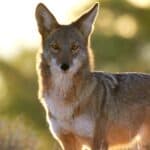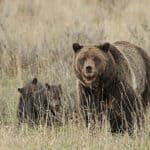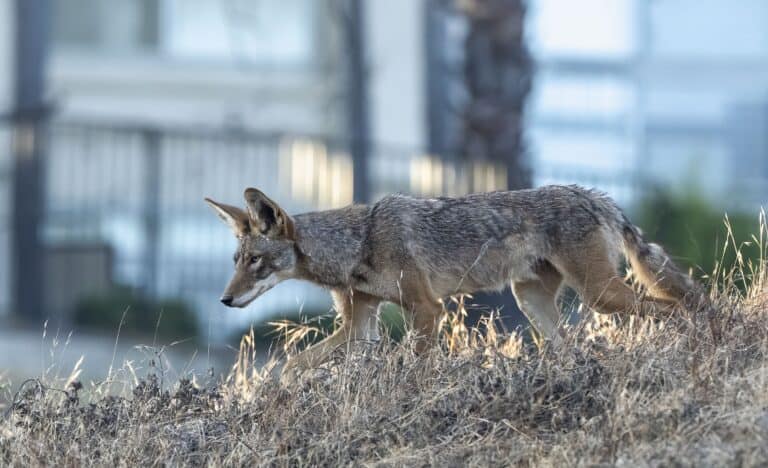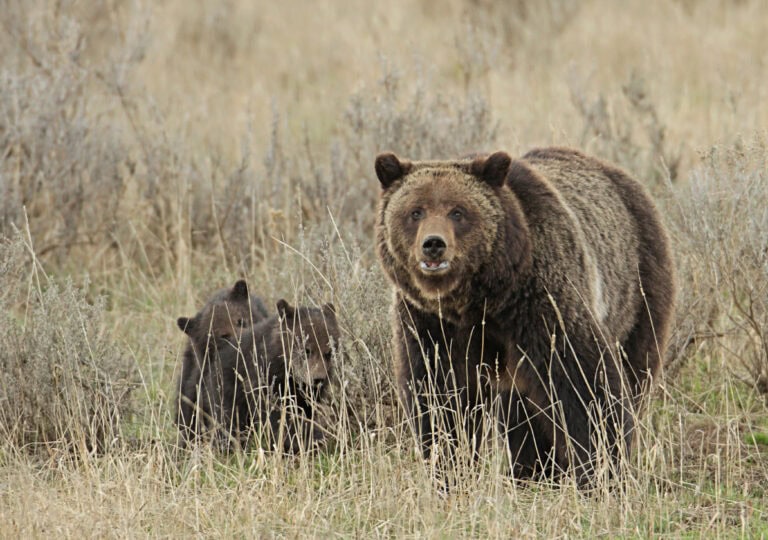Voice your support for bears by emailing the California Wildlife Resources Committee before September 12th and by testifying virtually on Thursday, September 15th (even if you live outside of CA!)
Despite reporting population declines of up to 67%, the California Department of Fish & Wildlife (CDFW) continues to approve the hunting of black bears. In April, the California Fish and Game Commission (CFGC) voted in opposition to a proposed moratorium on black bear hunting. CDFW is now in the process of updating the state’s black bear management plan while simultaneously considering increasing hunting opportunities.
Black bears continue to face extreme hardship from wildfires, drought, vehicle accidents and from loss of habitat and their natural food sources. And yet CDFW and CFGC continue to allow unethical black bear trophy hunting and are even considering a petition to increase black bear hunting statewide– despite not having a black bear management plan in place.
The Wildlife Resources Committee will update on both the black bear management plan and the petition for increased hunting opportunities of black bears at the next public meeting on Thursday, September 15th.
Join us in letting the Wildlife Resources Committee know that Californians want to protect, NOT kill our state’s black bears! Residents outside of CA can comment and testify and will be considered in the official record.
Here’s how you can help:
- Attend the California Fish and Game Wildlife Resources Committee meeting on September 15th at 9 a.m. to provide oral testimony. (agenda and further meeting details)
- There are TWO black bear items on the meeting agenda. Please comment on one or both.
- Agenda item #4 “Bear management plan” will include a discussion of the black bear management plan currently undergoing an update.
- Agenda item #11 “Commission Regulation Change Petition 2021-017” will include a discussion of an omnibus big game petition which includes the petition for a second bear tag thereby increasing hunting opportunities of bears.
- When public comment for these agenda items begins, use the ‘raise hand’ function in zoom to enter the queue to speak.
- When you’re called on, share your personalized testimony asking the Commissioners to protect our black bears and to oppose a second bear tag. Draft your testimony using the talking points below. Plan to keep your testimony to 1-2 minutes.
- There are TWO black bear items on the meeting agenda. Please comment on one or both.
2. Submit written comments via email (fgc@fgc.ca.gov) by noon on September 12th. Craft your comments in your own words using the talking points below.
The same TWO black bear agenda items are open for written comments. Please submit written comments on one or both (see above for details on black bear agenda items). In your comments be sure to include which agenda item you are addressing.
3. Spread the word by sharing this alert with others and encourage them to take action.
* * * * *
Talking Points
(Please personalize and be respectful)
- The state’s black bear population is in trouble. Given the threats to our California bears and their dwindling population numbers, our response should be to stop human-caused mortality. Current methods to estimate the state’s black bear population has reported consistently lower population estimates and growth rates since 2013, suggesting the population is in decline.
- Additionally, the department’s black bear take report for 2020 estimates the state’s black bear population at 15,934 (and potentially as low as 9,771), which is at least half of the “conservatively estimated” 30,000-40,000 bears listed on the CDFW website.
- Bear populations are self-regulating, without any need for hunting, to achieve natural densities.
- Bears reproduce very slowly and are highly susceptible to overkill. A female only reaches adulthood at approximately 4 years of age. She then gives birth to 2-3 cubs/year and has litters only every 2-3 years (depending on food resources, which are compromised by increasing wildfires and drought). Trophy hunters target breeding adults, which disrupt the animals’ social structure and further slow reproduction.
- Extreme climate events catalyzed by climate change, such as record-level wildfires in 2021, late season frosts, and droughts negatively impact bears, in particular through habitat destruction and reductions in food sources. Although these events are increasing in frequency, they are not considered in population estimates. Population modeling fails to consider super-additive mortality brought about by extreme climate events and anthropogenic factors such as surges in deaths by vehicle strikes. These events disproportionately affect females, some with cubs.
- Current scientific understanding acknowledges bears as feeling, thinking, self-aware beings who undoubtedly value their lives and wellbeing. Empirically and holistically we know bears and humans share most of the chemical, biological, anatomical and, to some extent, cognitive and emotional structures allowing for the sharing of basic emotions and interests such as joy, stress, sociability, wanting freedom from harm, to live and flourish. Ethical consistency demands that we apply the same consideration for bears as we do for other beings who share similar experiences and interests (e.g., companion animals).
- Bears are benefactors to nature, members of our multispecies community, and deserve our protection rather than persecution. They contribute community benefits through their top-down regulatory effects on ecosystems. Accordingly, ethical coexistence demands respect and consideration for bears in relevant policies and regulations.
- Black bears eat fruit and disperse seeds across vast distances.
- Black bears disperse fish remains on land, contributing to the dispersal of marine nutrients to terrestrial ecosystems.
- With various natural behaviors, bears cause small-scale disturbance to the canopy, allowing sun to filter to the forest floor and thereby increasing diverse plant growth.
- They improve soils by breaking logs while searching for food, which aids decomposition and soil nutrients.
- Hunters tend to hunt in their own local territories. Therefore, issuing two bear tags to already successful hunters may exacerbate human-caused mortality in certain areas, with harmful effects to bear social structure that may increase mortality further (i.e, super-additive). Female bears frequently remain close to their birth territories. Increased hunting pressure on the same landscape may not only increase the risk of killing local females, but the risk of new males killing cubs. A mother bear may then have to move to a less suitable habitat where there are fewer resources and a higher risk of conflict with humans. These issues have not been considered within the petition.
- Most Californians already oppose black bear hunting, and a majority support an outright ban of hunting black bears (according to a poll conducted by Remington Research Group for the Humane Society of the United States). Yet this proposal goes beyond ignoring the values of most Californians by promoting the opposite views. It sanctions harmful behaviors towards cherished wildlife! Moreover, past black bear management documents note that bear hunting (the season comprises a third of the year) monopolizes public lands and excludes both public lands conservationists and more sustainable activities, such as wildlife watching.
- Hunter demand cannot be the primary driver of wildlife management when bear hunters constitute less than 1 percent of Californians. Instead, the agency should holistically consider science, ethics and the broad public interest in protection and coexistence rather than killing.
- Both the Commission and the CDFW have acknowledged the intrinsic value of native carnivores, and their policies should reflect that recognition. Increasing opportunities to kill more bears explicitly promotes views that run contrary to ethical coexistence and holistic scientific understanding.






